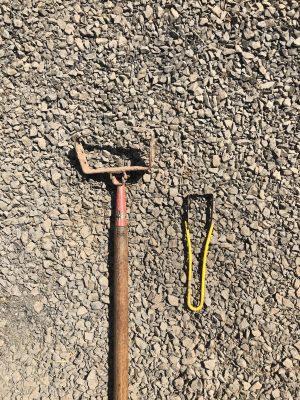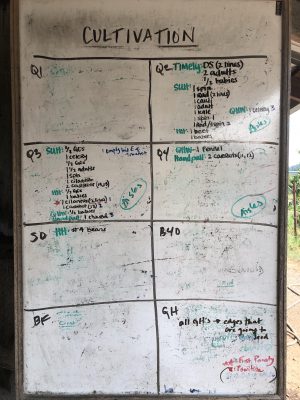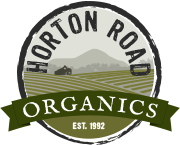As previously stated in past blog posts, each apprentice here at Horton Road Organics has a specific job that they oversee on the farm. My job is cultivation, which encompasses duties that include thinning of crops, weed control, and a weekly field walk. Cultivation is necessary on any size farm to keep weeds from stealing the nutrients, space, water, and sunlight that the crops need, to prevent weeds from flowering and spreading more seeds, and to make the harvesting process easier.
Here at Horton Road Organics, our beets are directly sown into the soil. Through this process, there isn’t enough room for each seed to grow into full-sized beets so a couple of weeks after they are planted, a cultivation task for us to complete is to thin the beets. Thinning the beets means we make room for roughly 4-5 inches of space between each beet and pull any beets inside this parameter. Before you start to worry about all of the beets we may be wasting, just know that this process is necessary for the plants in the long-run to grow into the beautiful sized beets you all enjoy today.
At this point, you may be thinking we use our hands to weed every bed on the farm, but I’m sorry to tell you that we don’t work that hard. We use different tools for different weeding tasks. Our main tools are our hula hoes and hand hoes. Hula hoes have a swivel head and a long handle so we use those standing up. Our hand hoes, you guessed it, go into our hands and are occasionally accompanied with a bucket for the weeds that are too big to be left in the bed. Crops that we mainly hula hoe, or stand-up hoe, include adult lettuce, kale, chard, and spinach. Crops that favor the hand hoe are salanova lettuce, beets after they are thinned, and green onions. Besides using hoes, we actually do use our hands for quick hand weeds and hand pulls on beds of crops. A quick hand weed is used on crops that are too big for both hula and hand hoes, where we can quickly walk down the bed and pull any weeds that are peeking through the crops. A hand pull is used mainly on our crops grown in rows, such as carrots and cilantro, where weeds tend to camouflage and grow between each individual plant.

In order for the group to know which bed to go to during the work day and which cultivation task to complete, I put out signs stating if the bed needs a hand hoe, stand up hoe, quick hand weed, or hand pull. Every Friday, I venture out to each field and greenhouse to determine the urgency and task needed for cultivation on each crop during the following week. I then place the signs to the corresponding beds and write that action down on a piece of paper. After my field walk, I write notes about which crop needs which cultivation task on a dry erase board that is broken up by field. It’s important to prioritize which crops need to be tended to first based on weed growth so that we don’t, knock on wood, lose any crops.

Taylor is loving her first experience in Oregon and first time working on an organic farm. Her favorite vegetable to harvest at Horton Road Organics is kale.
